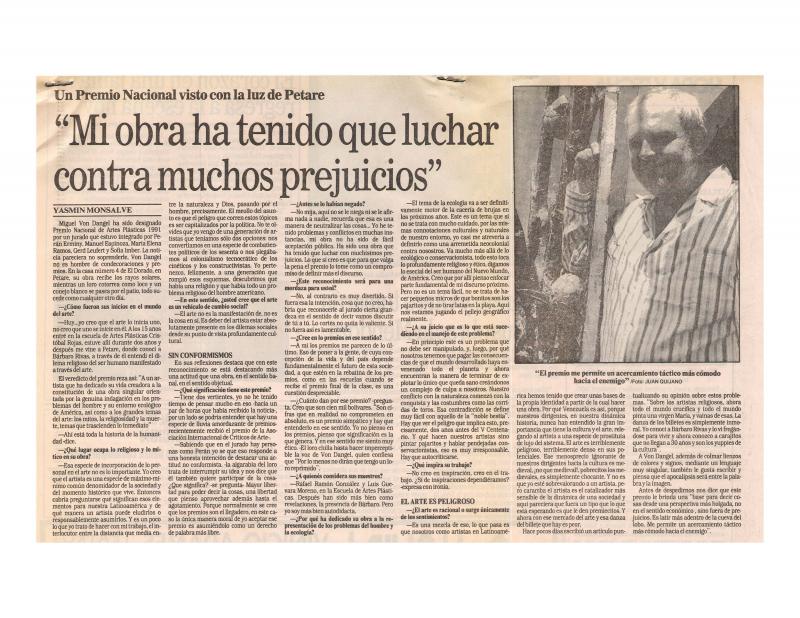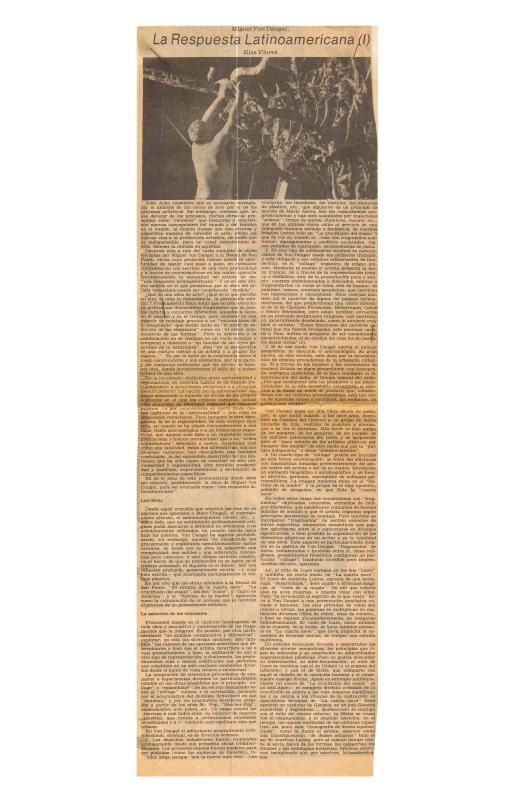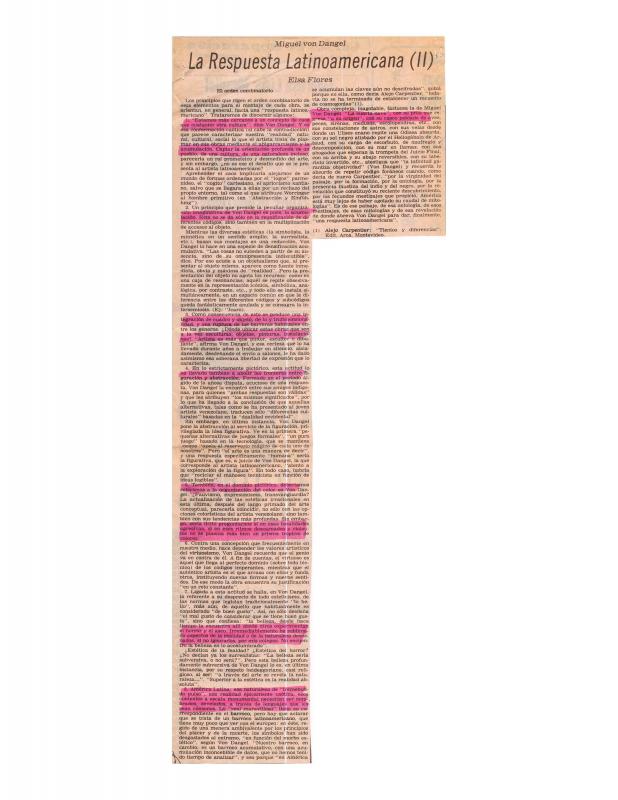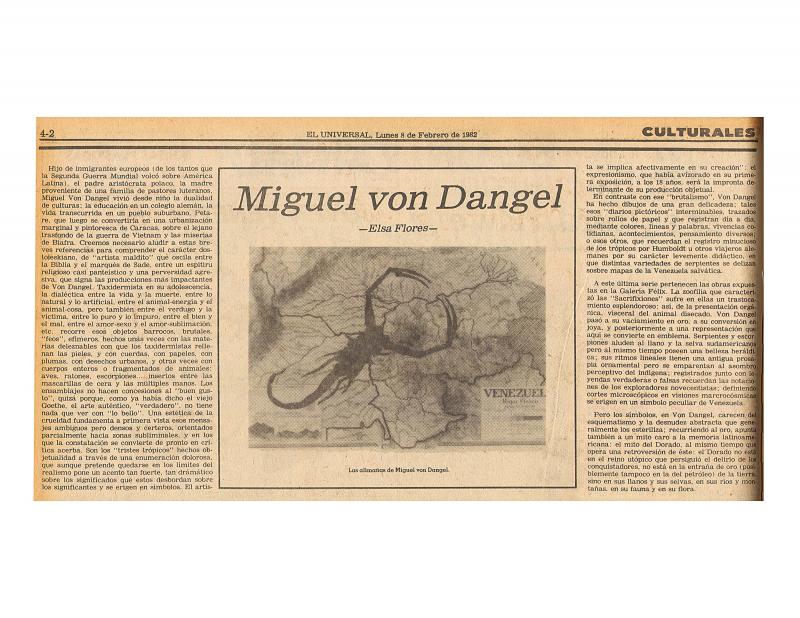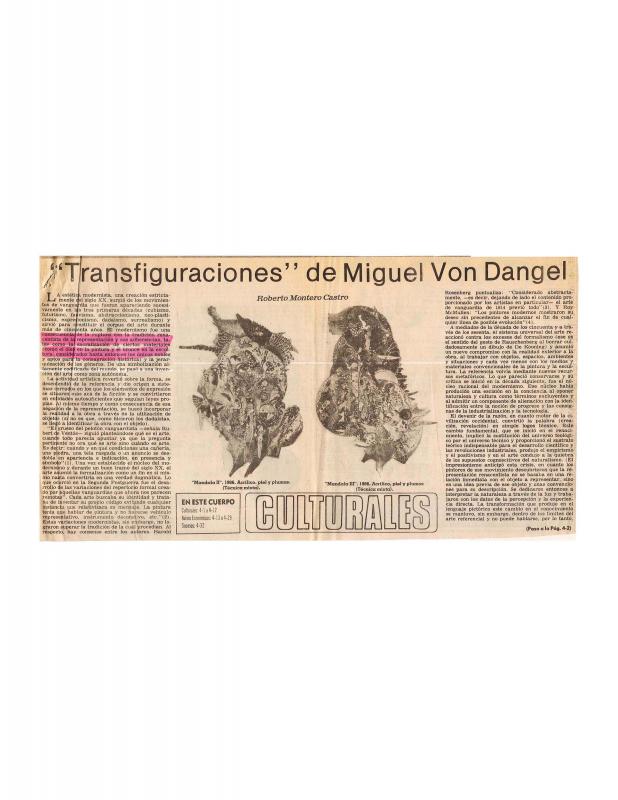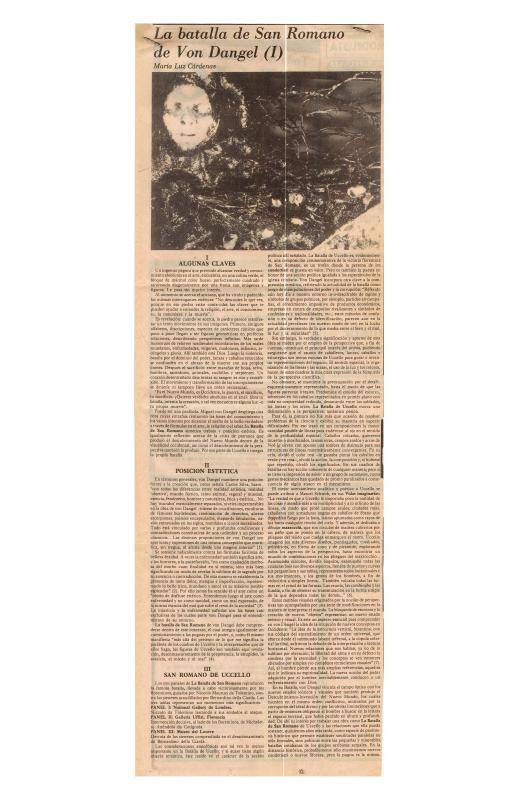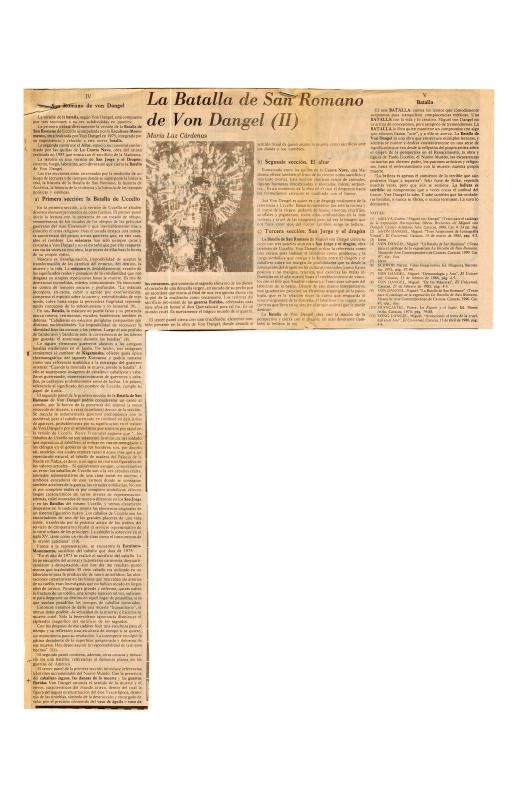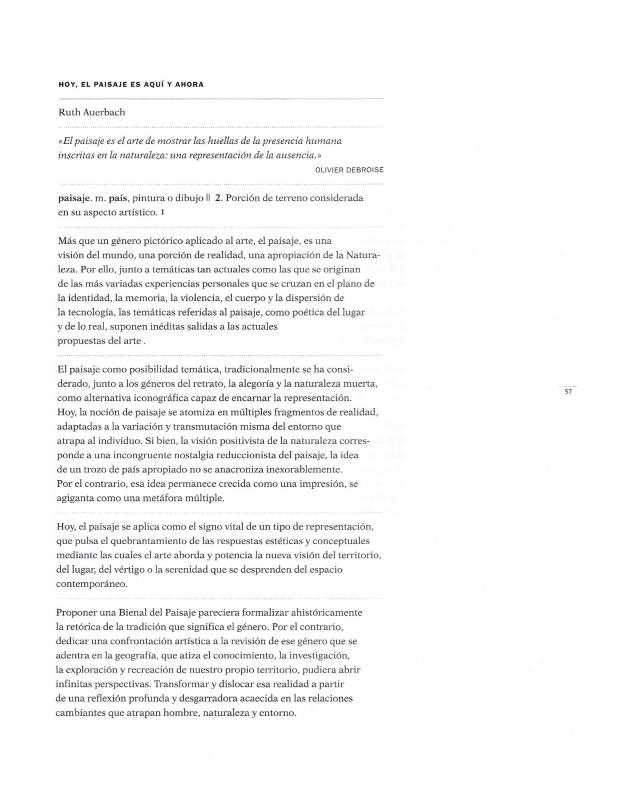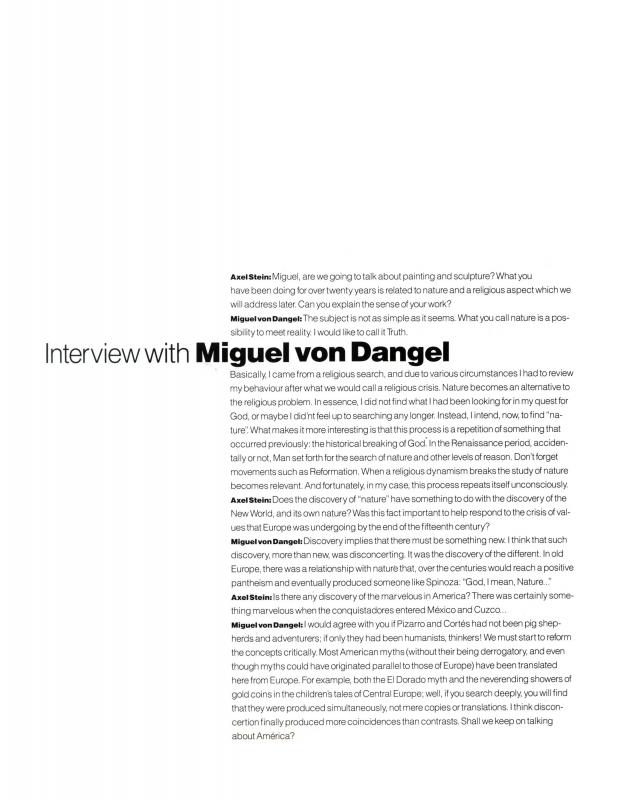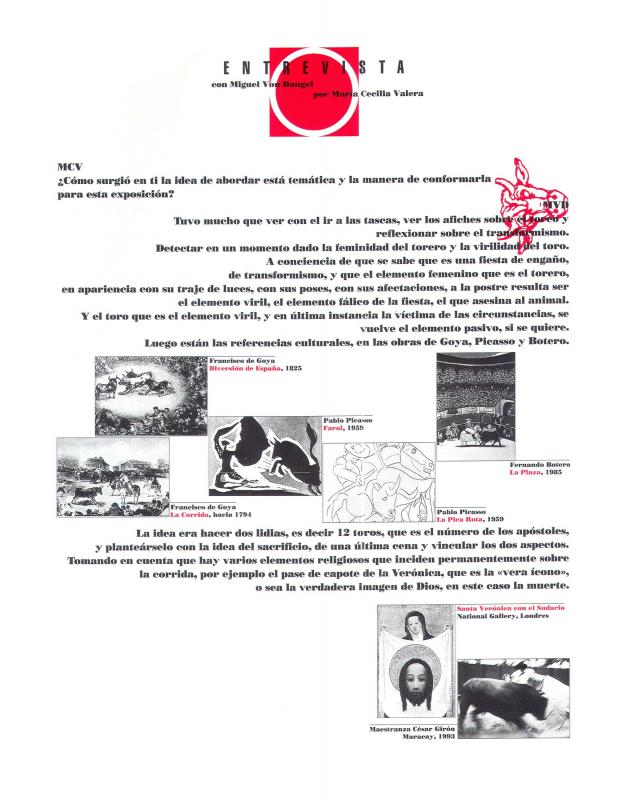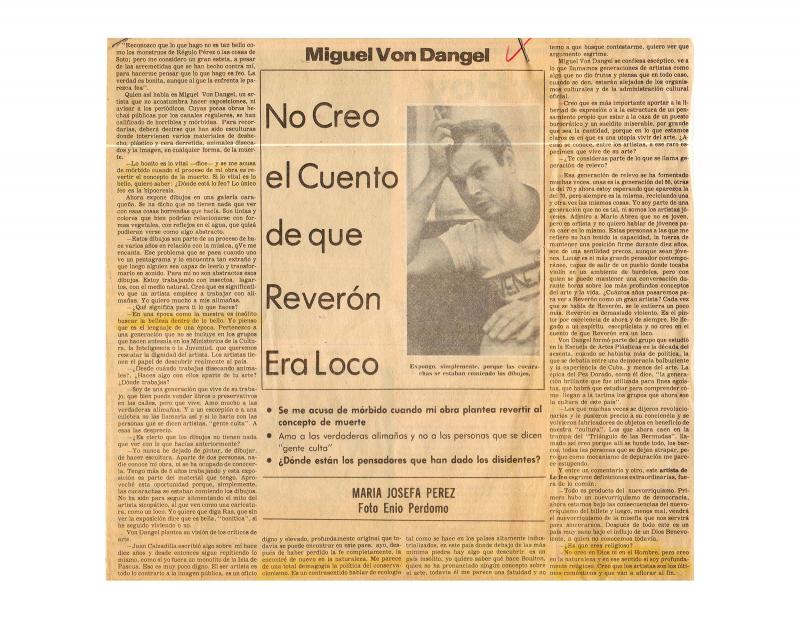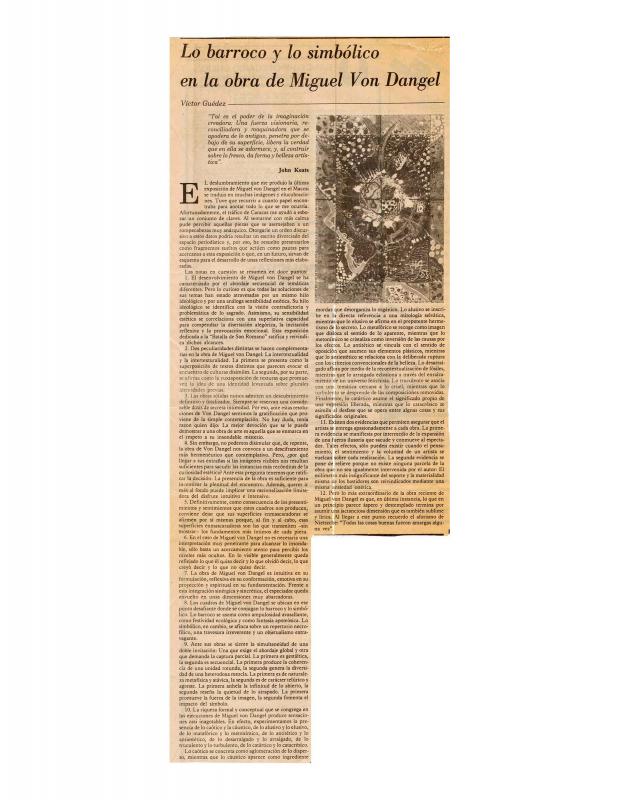In May 1990 the Museo de Arte Contemporáneo de Caracas presented La Batalla de San Romano, the painting (begun in 1986) by Miguel von Dangel (b. 1946). This was von Dangel’s version of the famous painting by the same name by the Renaissance artist Paolo Uccello. The catalogue text includes a selection of passages taken from the artist’s diaries, in which he recorded his thoughts about the historical circumstances surrounding the battle and the place where it was fought, and made notes about Uccello’s painting. Von Dangel’s version of the event, presented on several panels, is about thirty-two meters long and combines painting and sculpture. It includes the major ideas he has explored throughout his career. This work was Venezuela’s contribution to the Biennale di Venezia in 1992. The excerpts from von Dangel’s diaries shown in the catalogue reflect his thoughts on the historical context and political backstory of the Battle of San Romano, and his comments about Latin America (Venezuela in particular) in the present, the remote past, and the immediate past. These references, reflections, and atemporal connections are constant factors in von Dangel’s artistic discourse. At one point, the painter wonders whether it might “(…) be imprudent, disrespectful, or imply a lack of nationalism to attempt to compare, devoid of patriotic anesthetic, the battle by Uccello with the one at Carabobo painted by Tovar y Tovar, or the one of February 27, 1989.” (This last date refers to “El Caracazo”.) He can similarly be seen to be concerned with both aesthetics and symbolism, as expressed in the excerpt from March 12, 1987 in which he describes parts of his work: Jaguar knights and Amazon warriors are all swept up “in the whirlwind” with mercenaries and a crucifix. A colorful, baroque, complex, and symbolic combination that represents the many ways in which to perceive Latin America—as being imaginary, natural, Utopia, death—, whereas about the present time, the painter writes “(…) here we see the arrogance, the stupidity, the greed, the fear, and the evil.” To view other critical articles about the life and work of this artist, see by Yasmín Monsalve “Mi obra ha tenido que luchar contra muchos prejuicios: un premio nacional visto con la luz de Petare” (doc. no. 1102125); the essays by Elsa Flores “Miguel von Dangel: la respuesta latinoamericana (I)” (doc. no. 1155150), “Miguel von Dangel: la respuesta latinoamericana (II)” (doc. no. 1154906), and “Miguel von Dangel” (doc. no. 1056044); the essay by Roberto Montero Castro published in 1986 “Transfiguraciones de Miguel von Dangel” (doc. no. 1153996); the essays by María Luz Cárdenas “La Batalla de San Romano de von Dangel (I)” (doc. no. 1154028), and “La Batalla de San Romano de von Dangel (II)” (doc. no. 1154092); the article by Ruth Auerbach published in 1996 “Hoy, el paisaje es aquí y ahora” (doc. no. 855314); the conversation with Axel Stein published in 1998 “Interview with Miguel von Dangel” (doc. no. 1102348); the one with María Cecilia Valera “Entrevista con Miguel von Dangel” (doc. no. 1154060); the interview by María Josefa Pérez “Miguel von Dangel: no creo el cuento de que Reverón era loco” (doc. no. 1154012); and, finally, the article by Víctor Guédez “Lo barroco y lo simbólico en la obra de Miguel von Dangel” (doc. no. 1154124).

